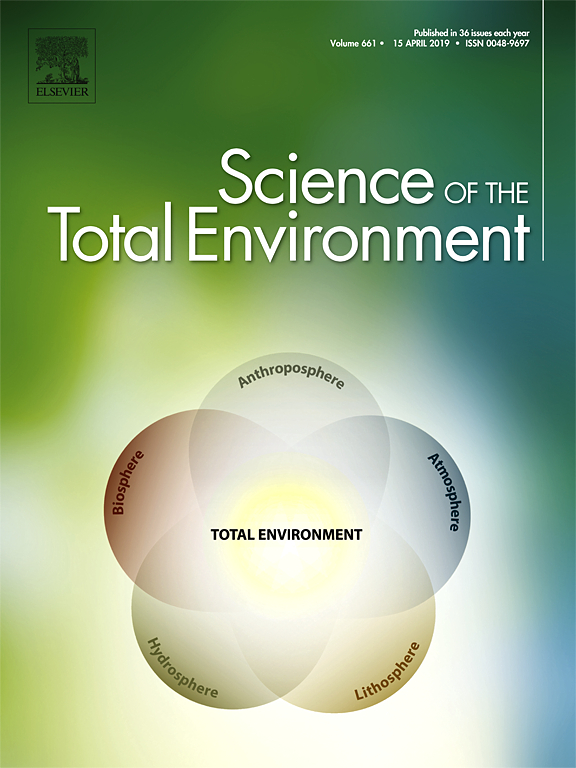Physiological studies should be in the centre of climate change biologyTiistai 12.4.2022 klo 15.49 - Mikko Nikinmaa Climate change, and other environmental changes, affect the functions of organisms. The changes in populations and ecosystems follow these functional changes. If the functions of some organisms are not disturbed, the environmental change does not affect the ecosystem, if immigration and emigration can be accounted for. These simple facts indicate that functional studies, i.e., physiology, should be in the centre of environmental biology. Indeed, a stone could have exactly the same molecules as an organism, but without functions it would still be a stone. However, physiological studies are marginalized in climate change research and environmental biology – there are less than 1/10th of published physiological articles as compared to ecological articles within environmental biology. Furthermore, studies on animals account for less than 1/3rd of the physiological studies. In short, one carries out extensive ecological surveys and population genetic studies and observes that something has happened. This is the major problem with the research, it shows what has already occurred, but fails to evaluate why and how. With climate change research it is obvious that temperature increase plays a role, but only physiological studies can clarify, what the affected pathways are. Also, physiological investigations can answer in real time, if a disturbance is adequate to cause a perturbation in populations and ecosystems. Climate change research as well as other environmental biology should be predictive. This requires that physiology becomes a central, not a marginal discipline. Studies require intensive, time-demanding work, which is often technically quite demanding. Because of this, the number of scientists working on physiological questions should be drastically increased. Only this makes it possible to turn environmental and climate change biology to predictive science, which is required to combat environmental problems. |
|
Kommentoi kirjoitusta. Avainsanat: ecophysiology, ecology, environmental pollution, temperature |
Environmental Biology Depends on FunctionsSunnuntai 24.2.2019 klo 12.14 - Mikko Nikinmaa The difference between a stone and an organism is function. A stone could have exactly the same DNA molecules as an organism, but without function it would be just a stone. For evolution and heritability the organisms need to reproduce; there can only be environmental effects on organisms, if the functions are affected. Consequently, any ecological response requires functional changes. For example, climate change can only influence ecosystem response via the effects of temperature on organismal function. The study of functions is physiology. In view of the above, it is very surprising that when one studies the functional responses that determine, how environmental changes affect ecosystem function, they are not considered to be of "general interest". In contrast, studies, which look at species changes observed or changes in the genetic composition of populations without trying to understand the underlying functional mechanism are of "general interest". The reason for this cannot be anything biological, but related to the n However, to study the responses of organisms to environmental changes and environmental contamination, physiological responses need to be studied. The common recent approach determining only mRNA level (quantitative PCR or RNA sequencing) does not say anything of the functional responses unless the transcriptional changes can be tied to protein function. It is completely plausible that the transcript is not translated to functional protein. If the transcript information is said to show functional responses, it is like saying: since we have increased the number of instuction books of how to build a machine, the amount of product the machine makes has increased. |
|
Kommentoi kirjoitusta. Avainsanat: climate change, ecology, genetics, environmenal responses |
Only half-a-degree temperature increase affects aquatic invertebrate communitiesTorstai 14.2.2019 klo 15.38 - Mikko Nikinmaa When the threats caused by climate change are discussed, it is often brought forward that temperature increase above 1.5 degrees would be critical. Usually verified data of what has already happened is not brought forward. Another pro So, political decision-makers should start taking the school-children demonstrating for climate actions instead of going to school seriously, not just saying that we are taking climate issues into account in our decisions, as long as they affect economic growth minimally. |
|
Kommentoi kirjoitusta. Avainsanat: climate change, community ecology, freshwater biology |

 umber of scientists working in the field. The number of scientists studying the functional environmental responses, i.e. ecophysiology, is very small, whereas environmental ecology, ecological and evolutionary genetics are very popular fields of biology. I am afraid that there are two major reasons for this. First, it appears that scientist are crowding in popular fields, whereby even if a field is potentially important, but not very popular to start with, it remains small. Second, it appears that the tedious laboratory work, which is needed for studying functional responses, is keeping people from doing the difficult physiological work. In physiology any determination is difficult and requires that the scientist is much more careful and accurate than in many simple ecological observations. Further, to successfully work in environmental pysiology, one needs to have good knowledge both of ecology and of animal physiology, i.e. more or less double the understanding which is common, if only ecological approach is utilized.
umber of scientists working in the field. The number of scientists studying the functional environmental responses, i.e. ecophysiology, is very small, whereas environmental ecology, ecological and evolutionary genetics are very popular fields of biology. I am afraid that there are two major reasons for this. First, it appears that scientist are crowding in popular fields, whereby even if a field is potentially important, but not very popular to start with, it remains small. Second, it appears that the tedious laboratory work, which is needed for studying functional responses, is keeping people from doing the difficult physiological work. In physiology any determination is difficult and requires that the scientist is much more careful and accurate than in many simple ecological observations. Further, to successfully work in environmental pysiology, one needs to have good knowledge both of ecology and of animal physiology, i.e. more or less double the understanding which is common, if only ecological approach is utilized. blem with most biological climate change studies is that conclusions are based on experiments lasting days or weeks instead of the many years that are required for the temperature increase in nature that is rapidly achieved experimentally. A recent study in the Science of the Total Environment avoided both problems. Haase et al. (Sci. Total Environ. 658, 1531-1538; 2019) have followed the invertebrate communities in some Central European streams for 25 years. During that time the temperature has increased only 0.5 degrees. However, despite the minute temperature change, the invertebrate communities were markedly affected. At first sight, as compared to the recently reported decrease of insect diversity, the findings look good: both the total abundance and the diversity of invertebrates increased by approximately 40 %. However, when the groups were differentiated on the basis of their temperature preferences, it was observed that the abundance and diversity of cold-water taxa was halved. For the species living in the north this is very bad news. Temperature changes occurring already, and not ones expected to occur 30 years from now, may cause their extinctions.
blem with most biological climate change studies is that conclusions are based on experiments lasting days or weeks instead of the many years that are required for the temperature increase in nature that is rapidly achieved experimentally. A recent study in the Science of the Total Environment avoided both problems. Haase et al. (Sci. Total Environ. 658, 1531-1538; 2019) have followed the invertebrate communities in some Central European streams for 25 years. During that time the temperature has increased only 0.5 degrees. However, despite the minute temperature change, the invertebrate communities were markedly affected. At first sight, as compared to the recently reported decrease of insect diversity, the findings look good: both the total abundance and the diversity of invertebrates increased by approximately 40 %. However, when the groups were differentiated on the basis of their temperature preferences, it was observed that the abundance and diversity of cold-water taxa was halved. For the species living in the north this is very bad news. Temperature changes occurring already, and not ones expected to occur 30 years from now, may cause their extinctions.